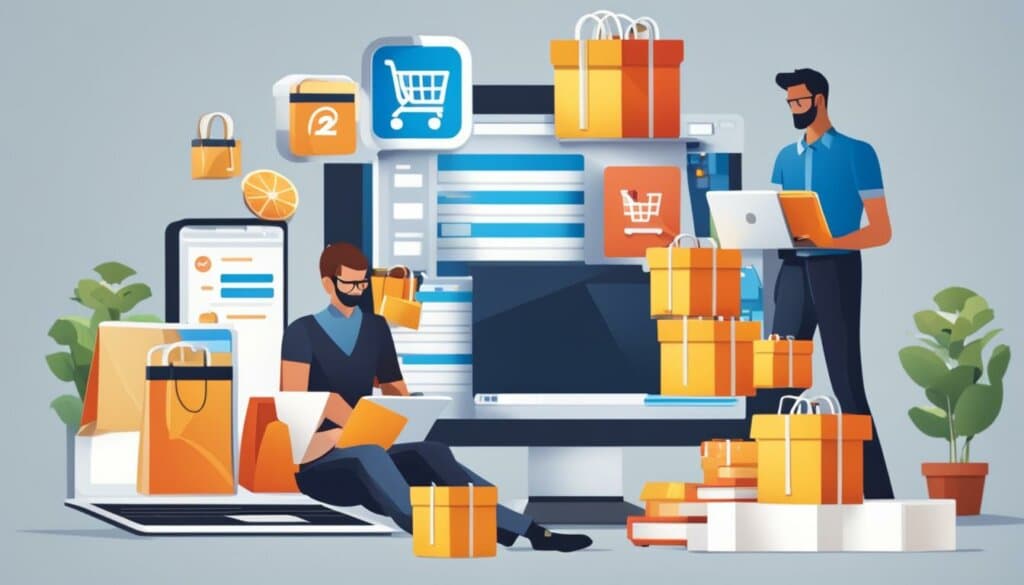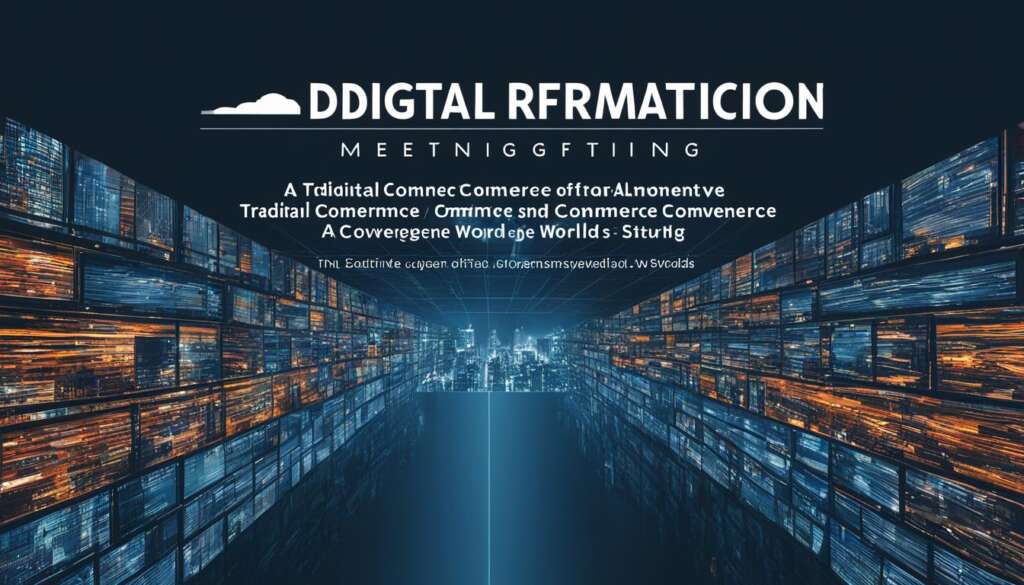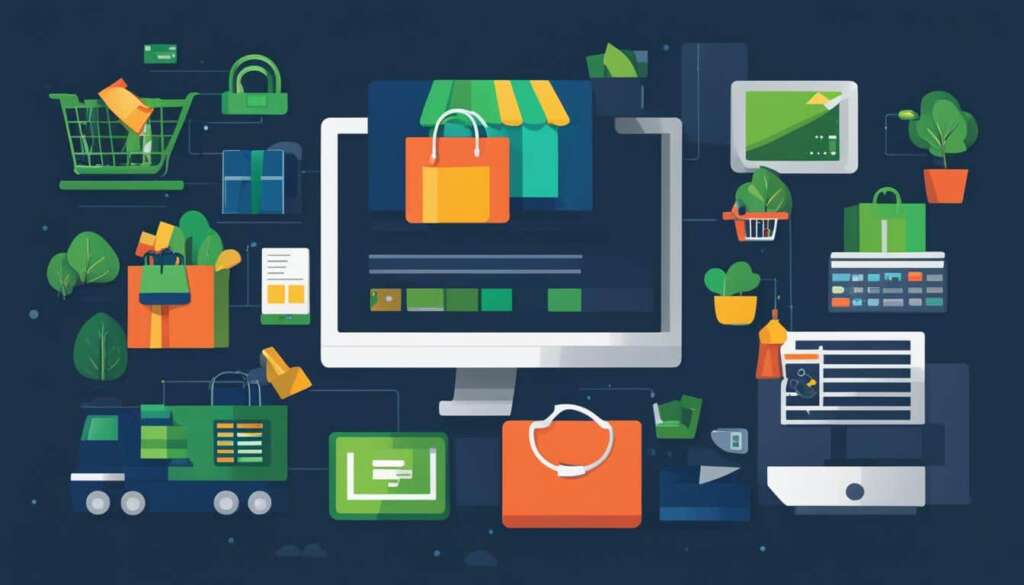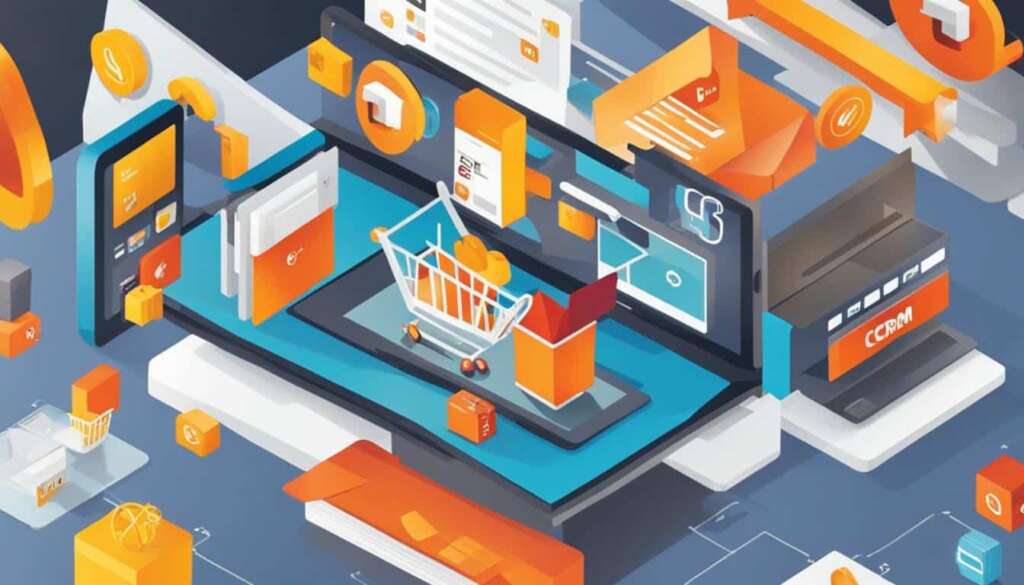Table of Contents
In 2022, 65% of B2B companies sold exclusively online, underscoring the significance of e-commerce in the B2B sector. The coming year, 2023, brings with it a wave of opportunities and challenges for businesses operating in this arena. To stay at the forefront of the industry, it is crucial for B2B enterprises to keep abreast of the latest trends and best practices in B2B e-commerce.
For 2023, there are several key trends that B2B businesses need to be aware of and embrace. These trends include:
- Mobile optimization
- Social commerce
- Personalized online shopping
- Omnichannel sales
- E-commerce tools automation
- Product discovery data
- Video content
- Sustainable e-commerce
- Headless commerce architecture
- Voice search
By incorporating these trends into their strategies, B2B businesses can elevate their operations, enhance customer experiences, and achieve a competitive edge in the ever-evolving e-commerce landscape. Let’s delve into each of these trends in detail to understand how they contribute to the growth and success of B2B enterprises in 2023.
Mobile Optimization Will Be Vital in B2B Ecommerce
With the increasing prominence of mobile commerce, optimizing ecommerce sites for mobile use is crucial for B2B businesses. By 2024, it is predicted that mobile commerce volume will reach a staggering $620.97 billion, with 42.9% of all ecommerce purchases being made on mobile devices. This shift towards mobile reflects the changing shopping habits of consumers.
“Mobile commerce volume is expected to reach $620.97 billion by 2024, with 42.9% of all ecommerce purchases being made on mobile devices.”
Optimizing for mobile not only allows businesses to meet customers where they are, but it also brings several benefits. One of the key advantages is a reduction in bounce rates, as users are more likely to engage with a mobile-optimized site. Additionally, mobile optimization decreases the likelihood of abandoned carts, ensuring a smooth and seamless buying experience.
As the reliance on mobile devices continues to grow, B2B businesses must prioritize mobile optimization to stay competitive in the ecommerce sector. Providing a user-friendly mobile experience will not only enhance customer satisfaction but also lead to increased conversions and revenue.
Key Benefits of Mobile Optimization in B2B Ecommerce:
- Reduced bounce rates and increased user engagement
- Improved user experience and customer satisfaction
- Decreased abandoned carts and increased conversions
- Enhanced brand reputation and credibility
Implementing mobile optimization strategies, such as responsive design, streamlined navigation, and fast-loading pages, will ensure that B2B ecommerce sites are accessible and user-friendly across various mobile devices. By prioritizing mobile optimization, businesses can leverage the growing trend of mobile commerce and maximize their success in the B2B ecommerce sector.
Social Commerce Offers New Shopping Options in B2B
Social commerce is transforming the way businesses connect with their customers in the B2B sector, providing new shopping options and expanding customer reach. With approximately 36% of internet users in the US classified as social buyers, B2B companies can tap into this growing market by optimizing their ecommerce presence on popular social media platforms like Instagram, TikTok, and Facebook.
By leveraging the power of social media, B2B businesses can showcase their products, interact with potential customers, and facilitate seamless transactions. Social commerce platforms offer a diverse range of shopping options and features, such as live shopping, shoppable posts, and customer testimonials, that enhance the online buying experience.
“Social commerce empowers B2B businesses to meet their customers where they already spend their time online, creating a convenient and engaging shopping experience.”
Furthermore, social commerce opens up opportunities for B2B businesses to build strong relationships with their audience through personalized content and targeted advertising. By understanding their customers’ preferences and behaviors, companies can tailor their social media strategies and deliver highly-relevant product recommendations.
Implementing social commerce strategies not only provides B2B businesses with new shopping options but also expands their customer reach. With more than 50% of consumers already making direct purchases from social media platforms, businesses can tap into this existing user behavior and drive revenue.
Take a look at the following table for a comparison of social commerce features on popular platforms:
| Social Media Platform | Key Features |
|---|---|
| Shoppable posts, product tagging, Instagram Checkout | |
| TikTok | In-feed shopping links, branded hashtags, shop now buttons |
| Facebook Shops, Messenger integration, dynamic product ads |
Integrating social commerce into B2B ecommerce strategies enables businesses to stay ahead of the competition, meet customer expectations, and capture new opportunities in the evolving digital landscape.

Sources:
- Statista: https://www.statista.com/topics/1846/social-commerce/
- Business Wire: https://www.businesswire.com/news/home/20210609005569/en/Social-Commerce-Market-to-Grow-by-USD-720.77-billion-and-Register-a-CAGR-of-31.19-during-2021-2025-Technavio
Personalized Online Shopping Enhances B2B Customer Experience
When it comes to online shopping, customers now expect a personalized experience that caters to their individual needs and preferences. This applies not only to B2C transactions but also to the realm of B2B ecommerce. B2B businesses can leverage personalized online shopping to enhance the customer experience and build stronger relationships.
One key aspect of personalized online shopping is the ability to provide tailored recommendations to customers based on their previous purchases and browsing history. By analyzing customer data and implementing algorithms, B2B ecommerce sites can offer relevant product suggestions that align with the customer’s interests and needs. This not only saves customers time but also increases the likelihood of them finding products that truly meet their requirements.
Furthermore, utilizing tailored language in the online shopping experience can make a significant impact on the B2B customer experience. Addressing customers directly and using language that resonates with their industry, role, or specific needs can create a sense of familiarity and trust. This personalized approach shows that businesses understand their customers’ unique challenges and are committed to meeting their needs.
Personalization in B2B ecommerce goes beyond product recommendations and tailored language. It also involves offering customized pricing, discounts, and promotions based on a customer’s purchase history, order volume, or loyalty. This level of personalization makes customers feel valued and appreciated, strengthening their loyalty and encouraging repeat business.
Personalized online shopping not only enhances customer satisfaction but also ensures that the information presented to customers is highly relevant. By tailoring content to the specific interests and preferences of each customer, B2B businesses can avoid overwhelming buyers with irrelevant information. This approach improves the overall shopping experience and increases the chances of customers finding the information they need quickly and easily.
Real-World Example: XYZ Solutions
A great example of a B2B company successfully implementing personalized online shopping is XYZ Solutions, a leading provider of software solutions for the manufacturing industry. XYZ Solutions has implemented a sophisticated recommendation engine that analyzes customers’ purchase history and industry-specific data to offer tailored product suggestions. This feature has not only increased customer satisfaction but also resulted in a significant uplift in sales and customer loyalty.
| Benefits of Personalized Online Shopping in B2B | Examples |
|---|---|
| Improved customer satisfaction | XYZ Solutions |
| Increased sales and customer loyalty | XYZ Solutions |
| Increased relevance of information presented | XYZ Solutions |
In conclusion, personalized online shopping plays a crucial role in enhancing the B2B customer experience. By utilizing tailored product recommendations, language, pricing, and promotions, B2B businesses can create a more satisfying and relevant shopping experience for their customers. Implementing personalized online shopping strategies can lead to increased customer loyalty, higher sales, and ultimately, a competitive advantage in the B2B ecommerce landscape.
Omnichannel Sales and Ecommerce Tools Automation Improve B2B Business Processes
Omnichannel sales and ecommerce tools automation are essential for enhancing B2B business processes. By adopting these strategies, businesses can achieve a seamless buying experience across multiple channels and streamline their operations for improved efficiency.
Omnichannel sales involve integrating online and offline channels to provide customers with a consistent experience. This approach allows B2B businesses to reach customers through various touchpoints, including websites, mobile apps, social media platforms, and physical stores. By implementing omnichannel sales strategies, businesses can ensure that customers receive a unified and cohesive buying experience, regardless of the channel they choose.
Furthermore, ecommerce tools automation plays a crucial role in optimizing B2B business processes. These tools automate time-consuming tasks such as inventory management, order fulfillment, and customer support, freeing up valuable time and resources. By leveraging ecommerce tools for automated processes, businesses can enhance operational efficiency, minimize errors, and focus on core business activities.
Benefits of Omnichannel Sales and Ecommerce Tools Automation in B2B:
- Seamless buying experience across multiple channels
- Improved customer satisfaction and loyalty
- Streamlined operations and increased efficiency
- Real-time inventory management
- Automated order processing and fulfillment
- Enhanced customer support and communication
By adopting omnichannel sales strategies and leveraging ecommerce tools automation, B2B businesses can optimize their sales processes, improve customer satisfaction, and stay competitive in the rapidly evolving digital landscape.
“Implementing omnichannel sales strategies allows B2B businesses to deliver a consistent buying experience, regardless of the channel customers prefer. By automating processes with ecommerce tools, businesses can streamline operations and focus on delivering value to their customers.”

| Benefits of Omnichannel Sales | Benefits of Ecommerce Tools Automation |
|---|---|
| 1. Consistent buying experience across channels | 1. Streamlined operations and increased efficiency |
| 2. Improved customer satisfaction and loyalty | 2. Real-time inventory management |
| 3. Increased customer engagement and conversions | 3. Automated order processing and fulfillment |
| 4. Enhanced customer support and communication | 4. Improved accuracy and reduced errors |
Product Discovery Data and Video Content Enhance B2B Shopping Experience
B2B buyers often encounter challenges when trying to find the right product and relevant information. In order to address this issue, the use of product information management (PIM) software has become essential. PIM software enables businesses to collect, manage, and distribute product data across multiple channels, resulting in a seamless shopping experience for B2B buyers.
“Product information management systems play a crucial role in enhancing the B2B shopping experience. By centralizing and organizing product data, businesses can provide accurate and comprehensive information to buyers, helping them make informed purchasing decisions,” says Lisa Anderson, CEO of Supply Chain Expertise.
Additionally, video content is a powerful tool that can be effectively utilized in the B2B sector to enhance the shopping experience. Video content is not limited to B2C brands, as it can capture the attention of B2B buyers and deliver important information in a visually engaging manner.
By incorporating product discovery data and video content into their B2B platforms, businesses can significantly improve the shopping experience for their buyers, facilitating better decision-making and ultimately increasing customer satisfaction and loyalty.
The Advantages of Product Information Management (PIM)
Product information management (PIM) software offers numerous benefits for B2B businesses. Here are a few advantages:
| Advantages of PIM | Explanation |
|---|---|
| Centralized product data | PIM software allows businesses to gather and store all product information in a single, accessible location. |
| Consistent product information | PIM ensures that product details, such as descriptions, specifications, and images, are consistent across all channels. |
| Improved searchability | With organized product data, buyers can easily find and filter products based on specific criteria, enhancing the product discovery process. |
| Enhanced customer experience | Accurate and comprehensive product information builds trust and instills confidence in buyers, leading to a better overall shopping experience. |
Sustainable Ecommerce and Headless Commerce Architecture in B2B
In today’s evolving business landscape, sustainability has become a key consideration in the B2B sector. To meet the growing demand for eco-friendly practices, many B2B brands are adopting sustainable ecommerce strategies. By incorporating environmentally conscious approaches like using eco-friendly materials and reducing energy consumption, businesses can not only reduce their carbon footprint but also appeal to customers who prioritize sustainability.
Another trend gaining traction in the B2B space is headless commerce architecture. Traditionally, ecommerce platforms have a tightly integrated front end and back end. However, with headless commerce architecture, businesses can have the flexibility to separate these two elements, allowing for more customized shopping experiences and efficient adaptation to changing customer needs.
Benefits of Sustainable Ecommerce in B2B
- Promotes environmental responsibility and reduces ecological impact.
- Attracts environmentally conscious customers and fosters brand loyalty.
- Differentiates businesses from competitors by showcasing their commitment to sustainability.
- Opens up opportunities for collaborations with other sustainable businesses.
Advantages of Headless Commerce Architecture in B2B
- Enables businesses to create unique and personalized shopping experiences for customers.
- Allows for faster website performance and easier scalability.
- Facilitates seamless integration with third-party applications and services.
- Provides the flexibility to adapt to changing technology and customer preferences.
Implementing sustainable ecommerce practices and adopting headless commerce architecture can position B2B businesses as leaders in the industry while enhancing their operational efficiency and customer satisfaction.
By embracing sustainability and leveraging the flexibility of headless commerce architecture, B2B brands can stay competitive, cater to evolving customer expectations, and contribute to a greener future.
Voice Search Expands Product Discovery Options in B2B Ecommerce
In the fast-paced world of B2B ecommerce, staying ahead of the competition is essential. One of the latest trends revolutionizing the way businesses operate is voice search. With 27% of the global online population using voice search daily, this technology has the potential to significantly enhance product discovery options in B2B ecommerce.
Voice search offers a convenient and efficient way for buyers to find products through spoken commands. By simply using their voice, customers can search for specific items or browse through product categories without the need for manual input. This hands-free approach streamlines the search process, saving valuable time for busy B2B professionals.
Implementing voice search capabilities in B2B ecommerce opens up a whole new world of possibilities for businesses. Not only does it provide an additional channel for customers to discover products, but it also aligns perfectly with the increasing use of mobile devices in B2B ecommerce. As more professionals rely on their smartphones and tablets for work-related tasks, voice search provides a seamless and efficient way to explore options and make informed purchasing decisions.
When incorporating voice search into B2B ecommerce platforms, it’s crucial to optimize the experience for mobile devices. This includes ensuring that the website is mobile-responsive, enhancing page load speeds, and optimizing content for voice-based queries. By prioritizing mobile optimization, businesses can cater to the growing demand for on-the-go product discovery options.
Benefits of Voice Search in B2B Ecommerce:
- Improved efficiency: Voice search enables buyers to find products quickly and effortlessly, leading to a more efficient purchasing process.
- Enhanced user experience: By providing customers with a hands-free browsing experience, voice search enhances the overall user experience and reduces friction in the buying journey.
- Increased accessibility: Voice search allows individuals with limited mobility or visual impairments to navigate and explore product options more easily.
- Expanded customer reach: By embracing voice search, B2B businesses can attract a wider audience and tap into new market segments, ultimately expanding their customer reach.
Implementing voice search capabilities in B2B ecommerce offers significant advantages for businesses looking to stay competitive in the rapidly evolving digital landscape. By providing fast and efficient product discovery options, businesses can improve customer satisfaction, drive sales, and achieve long-term growth.
“Voice search in B2B ecommerce not only improves the customer experience but also aligns with the growing trend of mobile usage in the B2B sector. It is a powerful tool that enables buyers to discover products with ease and efficiency. Incorporating voice search capabilities can give businesses a competitive edge in the fast-paced world of B2B ecommerce.” – Industry Expert
| Benefits of Voice Search in B2B Ecommerce | Percentage of Global Online Population Using Voice Search Daily |
|---|---|
| Improved efficiency | 27% |
| Enhanced user experience | 27% |
| Increased accessibility | 27% |
| Expanded customer reach | 27% |
Conclusion
In 2023, B2B ecommerce will be shaped by a number of significant trends. Mobile optimization will be crucial in meeting customers’ expectations and reducing bounce rates. Social commerce will provide new opportunities for businesses to expand their customer reach through platforms like Instagram and TikTok. Personalized online shopping will enhance the customer experience by tailoring recommendations and language to individual preferences.
Omnichannel sales and ecommerce tools automation will streamline business processes, offering a seamless buying journey and improved operational efficiency. The use of product discovery data and video content will facilitate easier shopping experiences and capture audience attention. Sustainable ecommerce practices and headless commerce architecture will gain importance, allowing businesses to offer customized experiences and adapt to changing customer needs.
Voice search will revolutionize product discovery options, catering to the growing number of mobile users in B2B ecommerce. By keeping a watchful eye on these trends and incorporating them into their strategies, B2B businesses can elevate customer experiences, streamline operations, and remain competitive in the dynamic e-commerce landscape of 2023.
FAQ
What are the top B2B examples in the e-commerce sector in 2023?
The top B2B examples in the e-commerce sector in 2023 include mobile optimization, social commerce, personalized online shopping, omnichannel sales, ecommerce tools automation, product discovery data, video content, sustainable ecommerce, headless commerce architecture, and voice search.
Why is mobile optimization important in B2B ecommerce?
Mobile optimization is important in B2B ecommerce because it allows businesses to meet customers where they are, reduce bounce rates, and decrease abandoned carts. It is predicted that by 2024, 42.9% of all ecommerce purchases will be made on mobile devices.
How can social commerce offer new shopping options in B2B?
Social commerce can offer new shopping options in B2B by optimizing ecommerce for platforms like Instagram, TikTok, and Facebook. More than 50% of consumers have made product purchases directly from social media platforms, providing B2B businesses with expanded customer reach.
How does personalized online shopping enhance the B2B customer experience?
Personalized online shopping enhances the B2B customer experience by providing tailored recommendations based on previous purchases, using personalized language, and addressing customer interests directly. This leads to improved customer satisfaction and increased relevance of information presented.
How do omnichannel sales and ecommerce tools automation improve B2B business processes?
Omnichannel sales focus on delivering a consistent buying experience across various channels, while ecommerce tools automate time-consuming tasks and improve efficiency. By implementing omnichannel sales strategies and utilizing ecommerce tools, B2B businesses can benefit from a seamless buying process and streamlined operations.
How do product discovery data and video content enhance the B2B shopping experience?
Product discovery data and video content enhance the B2B shopping experience by helping buyers find the right product and relevant information. B2B brands can use product information management (PIM) software to collect, manage, and distribute product information across multiple channels. Video content can capture audience attention and deliver important information.
How can sustainable ecommerce and headless commerce architecture benefit B2B businesses?
Sustainable ecommerce practices, such as using eco-friendly materials and reducing energy consumption, are gaining importance in the B2B sector. B2B brands may invest in headless commerce architecture to offer more customized shopping experiences and flexibility in adapting to changing customer needs.
How does voice search expand product discovery options in B2B ecommerce?
Voice search is increasingly popular and can provide fast and efficient ways for B2B buyers to discover products. It is optimized for mobile devices and aligns with the trend of increased mobile usage in B2B ecommerce. Voice search can be implemented to enhance the product discovery process.
What are the B2B ecommerce trends for 2023?
The B2B ecommerce trends for 2023 encompass mobile optimization, social commerce, personalized online shopping, omnichannel sales, ecommerce tools automation, product discovery data, video content, sustainable ecommerce, headless commerce architecture, and voice search.













